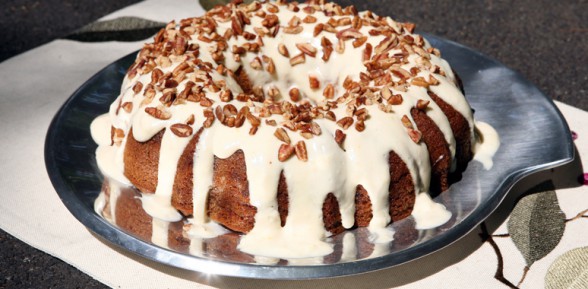Guest Author: Brittany Cines
What’s with all the hype? Is it really worth splurging for that organic banana? In reality, when it comes down to nutrients there is very little difference. So why is everyone following in the trend towards purchasing organic produce?

First, let me explain what we are actually buying when we choose organic fruits and vegetables over the conventional types. According to the UDSA, ”Organic is a labeling term that indicates that the food or other agricultural product has been produced through approved methods that integrate cultural, biological, and mechanical practices that foster cycling of resources, promote ecological balance, and conserve biodiversity.” The USDA’s organic standards prohibit the use of synthetic fertilizers, sewage sludge, irradiation, and genetic engineering. Government-approved certifiers monitor the production process of organic produce to ensure that it abides by the government standards. It should be noted that despite these strict regulations, the government does not ensure that organic foods are safer or more nutritious than their conventional equivalents.
There are countless opinions about the organic debate. Before taking a stance, you should educate yourself about the advantages and disadvantages of choosing organic. Scientists have found that organic produce has a 30% lower risk of pesticide contamination than their conventional types. At the same time, it is important to realize that organic fruits and vegetables are not necessarily 100% pesticide-free. Furthermore, even the pesticide levels in non-organic produce fall within safe limits for consumption. With regards to nutrient content, organic foods have been shown to have higher levels of phosphorous, and chicken typically has higher omega-3 fatty acid levels. Except for these two slight differences, organic products have the same vitamin and mineral contents as their non-organic alternatives. Lastly, organic foods are typically twice the cost.
Let’s be realistic. We don’t all have the money to buy expensive organic produce for our families and what is the point if it won’t even make a huge difference to our health? Therefore, we need to decide when it is worth the extra few dollars for that organic piece of fruit, and when the conventional version will suffice. Each year the Environmental Working Group releases the ”Dirty Dozen,” which is a list of the 12 fruits and vegetables that contain the highest contamination levels. When determining which fruits and vegetables we should buy organic, this list may be a helpful reference. They also released a ”Clean 15” list of produce that are lowest in pesticides and would therefore make more sense to buy the conventional type. All in all, it may not be advantageous to buy organic produce if you are concerned with the nutrient content, since they are pretty much equivalent to their conventional alternatives. However, if you are worried about the consumption of pesticides, buying organic produce is worth the sacrifice, especially for the ”Dirty Dozen.”
Dirty Dozen
1. Peaches
2. Apples
3. Sweet Bell Peppers
4. Celery
5. Nectarines
6. Strawberries
7. Cherries
8. Pears
9. Grapes (imported)
10. Spinach
11. Lettuce
12. Potatoes
Sources:
http://www.health.harvard.edu/blog/organic-food-no-more-nutritious-than-conventionally-grown-food-201209055264
http://www.foodsafety.wisc.edu/HotTopics/Should_I_Choose_Organic_Foods.html
http://www.ams.usda.gov/AMSv1.0/nop
About Brittany
My passion for cooking really began when my mom signed me up for my first cooking classes at the age of 8. My love for food and cooking continued to grow stronger as I took every child, teen and adult class that was offered at my cooking school. Towards the end of high school, I expanded my love for cooking as I started to develop an interest in healthy eating. I graduated from the University of Maryland with a degree in Dietetics. Throughout college, I held a job as a Student Nutritionist for the University of Maryland Dining Services, and I interned at The National Institutes of Health, the Hebrew Home of Greater Washington, as well as at Suburban Hospital. In the fall I will begin my Dietetic Internship at the National Institutes of Health. Following the completion of this yearlong internship I plan to sit for my certification examination, in order to become a Registered Dietitian (RD). I am so excited to be involved with this blog, because it fits in perfectly with my passion, and it allows me to share some of the topics I have learned about in my nutrition courses and throughout work experiences.
If you enjoyed this post, subscribe for free to receive new recipes by email.

























 This venture grew out of necessity after I fell in love and married a wonderful man, who happened to be Macrobiotic. I wanted to continue to eat yummy food but now had the knowledge of how unhealthy most sweets can be. I realized I was going to need to be creative to make my taste buds and my husband happy.
This venture grew out of necessity after I fell in love and married a wonderful man, who happened to be Macrobiotic. I wanted to continue to eat yummy food but now had the knowledge of how unhealthy most sweets can be. I realized I was going to need to be creative to make my taste buds and my husband happy.  With an ever-growing love of cooking, as inspired by my Macrobiotic-influenced home, I strive to produce healthy food without the sacrifice of taste. My appreciation for pure, organic foods is reflected in my creations, along with my high standards and motivation. In times of need to balance the stress of high school, cooking serves as a quick relief, as it is truly what I love.
With an ever-growing love of cooking, as inspired by my Macrobiotic-influenced home, I strive to produce healthy food without the sacrifice of taste. My appreciation for pure, organic foods is reflected in my creations, along with my high standards and motivation. In times of need to balance the stress of high school, cooking serves as a quick relief, as it is truly what I love. 
